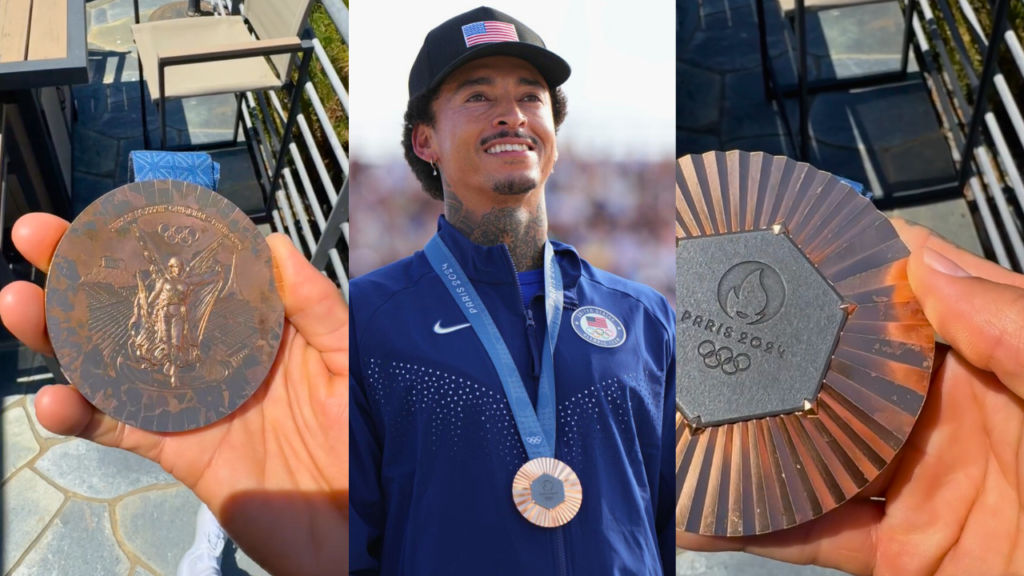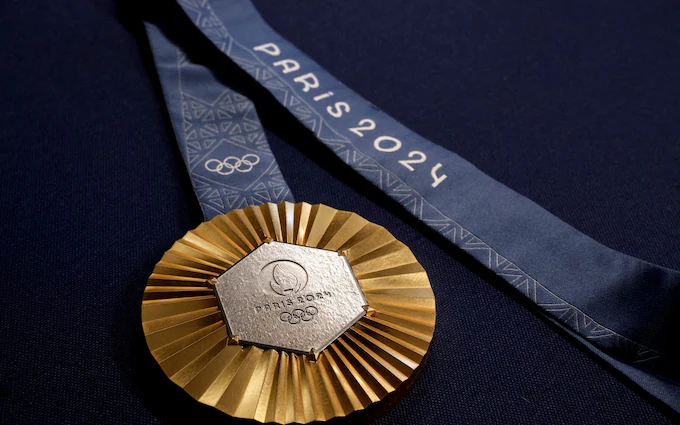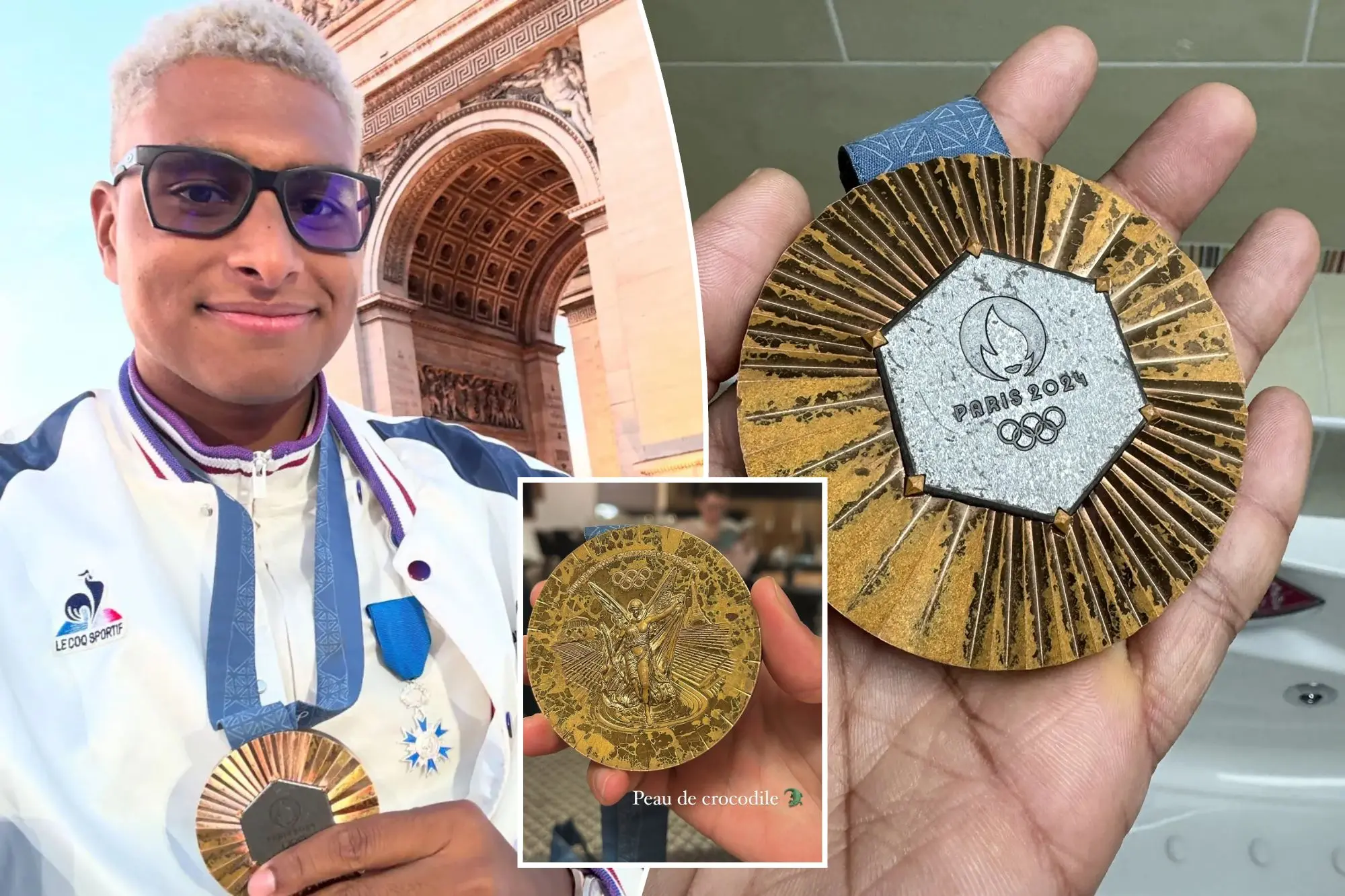The 2024 Paris Olympics, held in the City of Light, were celebrated as a monumental event for sportsmanship and unity. However, what was meant to be an occasion of triumph has since been marred by a controversy regarding the quality of the medals awarded to athletes.
French Olympians, particularly swimmers Yohann Ndoye-Brouard and Clement Secchi, have gone viral after sharing distressing images of their bronze medals, which seem to show signs of deterioration only days after the competition.
This has sparked widespread concern about the durability of Olympic awards, leading to comparisons with older, deteriorating medals. In this blog, we will delve into the issue surrounding the 2024 Paris Olympic medals, the reactions from athletes, and the response from organizers.
The Rise of the Deteriorating Medal Controversy
The controversy surrounding the 2024 Paris Olympic medals began when French swimmers Yohann Ndoye-Brouard and Clement Secchi posted images of their bronze medals online. The two athletes, who secured bronze in the men’s 4x100m medley relay, were the first to bring the issue to the public’s attention.
On social media, Yohann Ndoye-Brouard compared his bronze medal to a relic from the 1924 Paris Olympics, suggesting that it looked aged and worn out. Secchi’s medal was described as resembling “crocodile skin” due to the apparent deterioration of its surface.
The social media posts quickly went viral, with many athletes and fans expressing concern about the quality of the medals awarded at the games. The athletes’ complaints were not isolated, as several other Olympians also voiced similar frustrations regarding the condition of their medals.
Read : Paris Olympics Displaced Nearly 20,000 People: Local Associations Report
American skateboarder Nyjah Huston, for example, shared his discontent on Instagram, noting that the bronze medal he won at the skateboarding event began showing signs of wear and tear after a short period. He remarked that the medals looked fine when freshly awarded, but once exposed to sweat and handling, the surface began to tarnish and discolor.
😭😭 Paris 1924 pic.twitter.com/WzfoV3ECQt
— Yohann Ndoye Brouard (@yohann_2911) December 28, 2024
The issue seemed to be particularly troubling for athletes who had invested years of hard work to earn their place on the podium. The Olympic medals, which are meant to represent the pinnacle of achievement in sports, were expected to be durable and of high quality. However, the reality of the situation appeared to be quite different.
The Quality Control Issues Behind the Medals
The medals awarded at the Paris 2024 Olympics were designed by renowned jeweler Chaumet, a name synonymous with luxury and craftsmanship. Each medal features a piece of the Eiffel Tower, adding a unique and historical element to the prize.
The designs were intended to reflect both the modern spirit of the Paris Games and the rich cultural heritage of the host city. However, the deteriorating state of the medals suggests that something went wrong in the manufacturing process.
Organizers of the games have acknowledged the complaints from athletes regarding the quality of the medals. In a statement to the Daily Mail, a spokesperson for Paris 2024 said, “Paris 2024 is aware of a social media report from an athlete whose medal is showing damage a few days after it was awarded.”

The statement emphasized that Paris 2024 is working closely with the Monnaie de Paris, the institution responsible for producing and quality-controlling the medals, to investigate the cause of the damage.
The organizers also mentioned that they were collaborating with the National Olympic Committee of the affected athletes to assess the situation and ensure that the cause of the issue is fully understood.
This move reflects an understanding that the condition of the medals is a matter of significant concern for athletes, particularly those who have dedicated their lives to achieving Olympic success.
A tarnished medal may not only diminish the value of the award but also leave athletes feeling disrespected by the Games’ organizers, who are expected to honor their achievements with the highest level of care and quality.
It is worth noting that tarnishing and discoloration of medals is not a new issue. In previous Olympics, there have been occasional reports of medals showing signs of wear and tear after being awarded.

However, the extent of the damage seen in the 2024 Paris medals appears to be more severe than in previous instances. This raises questions about whether the production and quality control processes were adequately managed, especially considering the high standards expected of Olympic medals.
The Impact on Athletes and the Reputation of the Paris 2024 Games
The reaction from athletes regarding the state of their medals has been mixed. While some have expressed disappointment and frustration, others have been more forgiving, acknowledging that the tarnishing may be a natural consequence of handling and exposure to sweat.
British diver Yasmin Harper, for example, admitted that her bronze medal had experienced some minor tarnishing but did not seem overly concerned. “The medals. Er, there has been some small bits of tarnishing, I will admit, yes,” Harper said in an interview.
“Yes, I have looked at mine. A little bit [of tarnishing]. I don’t know, I think it’s like water or anything that gets on the metal, it’s making it go a little bit discolored.”
Despite these varied responses, the issue has raised important questions about the responsibility of the organizers to provide high-quality awards to athletes.
Olympic medals are meant to be a lasting symbol of achievement, not just for the individual athletes but for the countries they represent. A medal that tarnishes quickly or looks cheaply made can tarnish the reputation of the Games themselves.
The Paris 2024 Games have already been marred by other controversies, including concerns over ticketing, the cost of attending events, and security.

The ongoing medal issue only adds fuel to the fire, making it harder for the organizers to present the event as a resounding success. It also raises concerns about how future Olympics will handle the production and distribution of medals, especially as more attention is paid to the materials used and the processes behind their creation.
The complaints regarding the quality of the medals awarded at the 2024 Paris Olympics underscore a larger issue of accountability and quality control. For athletes who have trained for years to earn their Olympic medals, the physical condition of the award should reflect the dedication and excellence required to win it.
A tarnished or poorly made medal not only diminishes the achievement but also sends the message that the organizers did not give adequate consideration to the importance of the medals themselves.
Paris 2024 organizers must work quickly to address these concerns and provide solutions that restore confidence in the Olympic medal system. Whether through better quality control or offering replacements for damaged medals, it is crucial that the integrity of the medals is upheld, ensuring that future Olympians are given the recognition they deserve.
The controversy surrounding the 2024 Paris Olympic medals serves as a reminder that, while the Games are about athletic performance, the symbolic value of the medals should not be underestimated.
These awards are meant to celebrate human achievement and inspire future generations of athletes. As the Paris 2024 Olympics reflect on these concerns, they must take steps to ensure that the integrity of the Games is preserved for years to come.

